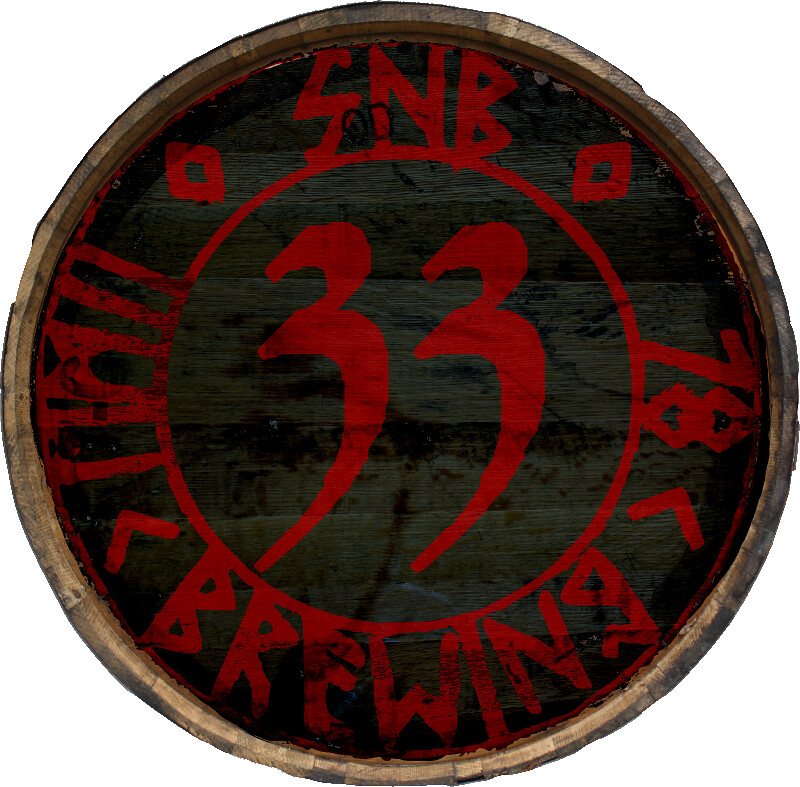 |
The bottle cap design for
the main blend |
Of all the art forms in brewing that have started to find their way into American Craft brewing one of the most exciting for me personally is blending. A lot of brewers today are doing barrel aged beers, be they sours or big thick stouts, tossing them into barrel and letting them sit for a few months. Few however are going the next step and precisely blending them together in a way that elevates the overall beer. Most often all of the barrels are simply dumped into a brite tank or other container for packaging. While there is nothing intrinsically wrong with this method better results can occur when they don't feel attached to use all the barrels. You have to remember that the beer in each barrel matures at a different pace. Just because you put the same batch of beer in barrels from the same distillery at the same time does not mean they hit peak flavor in unison. In fact the range can be between 9-18 months for a barrel to develop the flavor the brewer is after. Some of the best blended beers out there tend to be blends of multiple years of beers, the upcoming 10th Anniversary of Utopias for example contains a batch of Triple Bock from 1993.
Let's take a deeper look at the blending that went into the 10th / 2012 batch of Utopias
The 2012 Utopias brew was aged in hand selected, single-use bourbon
casks from the award winning Buffalo Trace Distillery to enhance the
beer’s distinct vanilla and maple notes. In fact, this year’s brew including some of our original Triple Bock from 1993. Our 10th Anniversary
batch also spent time in a variety of finishing casks: Tawny Port casks
and Vintage Ruby Port casks from Portugal, which contribute slightly
more elegant, dark fruit aromas, and Rum barrels from Nicaragua, which
add flavors of fig, chocolate, raisin, vanilla, and a slight spice.
 |
| Blend 521 |
I've been wanting to create my own blended beer for a while, in fact I started soaking some of the oak way back in July of 2011. At the time I had planned on creating my own Firestone Anniversary type blend (which is made up of several types of beer instead of a single style). That plan never got off the ground but later in that year when I brewed up 33 I knew I'd found the prefect beer to give blending a shot. Unfortunately due to it's close vicinity to Halvtreds it caught a brett infection that somewhat diminished the final flavor of the beer. Still I decided to press on with my plan and give blending a shot.
My plan for the blend was to take divide up 33 into four gallon jugs with a 1/2 gallon growler. In each I would add some of the spirit soaked wood and set it aside for a couple of months. To fill the jugs I decided to keg up the 33 so that I could use my BeerGun to purge the jugs with CO2 before filling them so that I could reduce any oxygen exposure. Once filled I wrapped them with electrical tape. When all was said and done I ended up with five "barrels".
"Barrel" 1 - Korbel Port / American French Oak
"Barrel" 2 - Pusser's Rum / Medium French Oak
"Barrel" 3 - Hecker Pass Ruby Port / Medium Oak Cubes
"Barrel" 4 - Maker's Mark Bourbon / Oak Chips
"Barrel" 5 - Korbel Cabernet Sauvignon / Medium American Oak
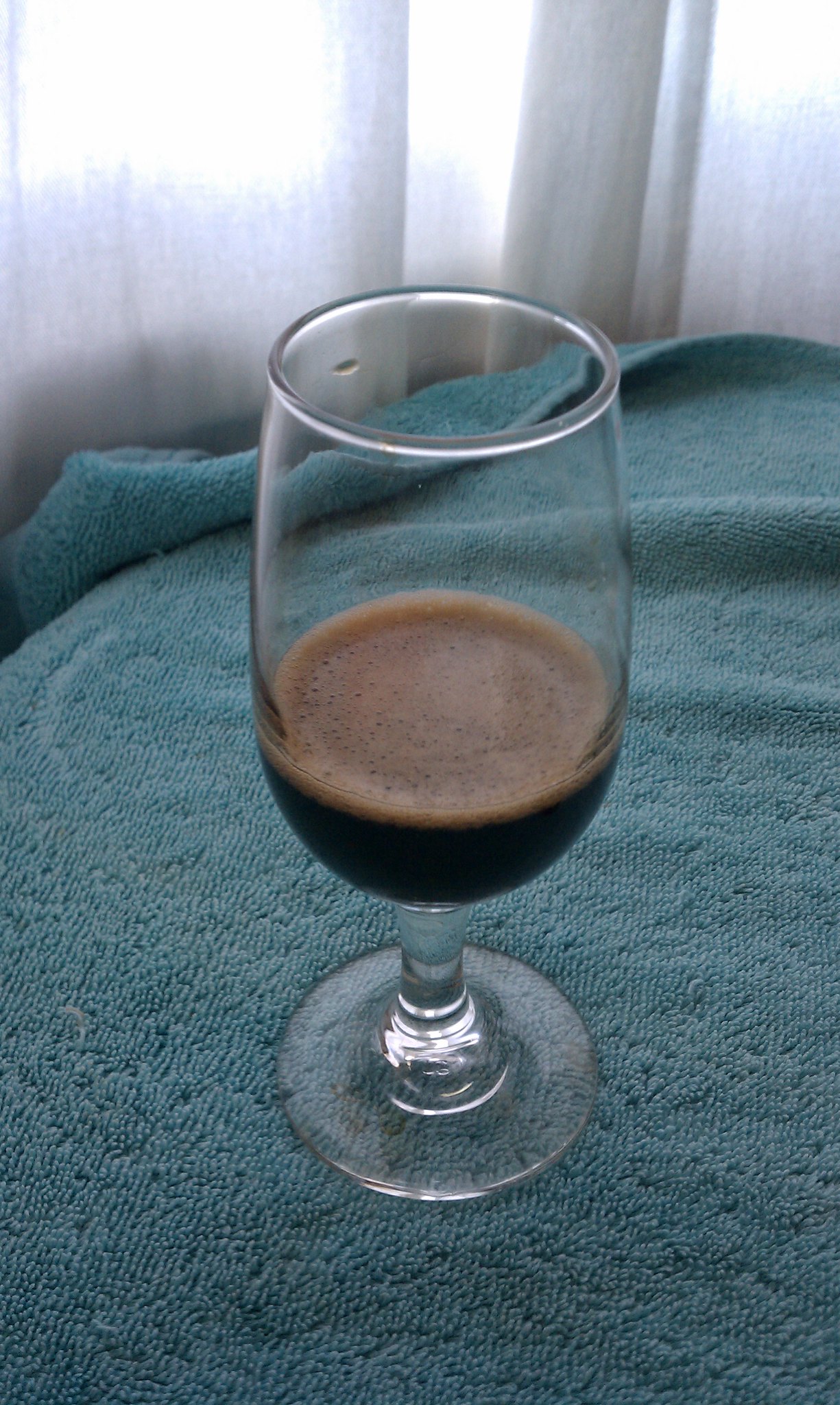 |
A little sample of "Barrel" 5 -
Korbel Cabernet Sauvignon |
After two months I decided to try "barrels" 1 & 2. While they weren't quite as spirity as I was hoping for they tasted solid so I decide to blend them together. I figured given my success with Imperial Rhino Stout 2011 (2012 coming soon...) in holding carbonation after being beer gunned, I'd blend it in the keg and serve it on draft for a while (I'd been really wanting an Imperial Stout on that I could sip on) and BeerGun the rest later.
In addition to the main blend I decided to do up five 12oz bottles, one from each of the "barrel", and a special 521 blend from "barrels" 5, 2 and 1 which happens to be the first three digits to my home phone number growing up in the SLC. To prime the bottles I used some carb tabs and re-hydrated some dry yeast which I added to each bottle using a medicine dropper. I've made special caps for each of the blends to tell them apart; 33 - Korbel Port, 33 - Pusser's Rum, 33 - Hecker Pass Ruby Port, 33 - Maker's Mark Bourbon, 33 - Korbel Cabernet Sauvignon and 33 - 521 Blend. I'll probably do a variant tasting with all the bottles in December.
Overall I think the blend is just ok, it's definitely better than it had been but not as good as I was hoping it would be. Given how much I enjoyed Kate the Great and 33 before it caught a brett infection I plan on doing it again with 34 and leaving it on the wood for several additional months before I blend it.
Cheers
-SNB
Pictures
 |
| The spirited oak ready to go |
 |
| Clean and sanitized |
 |
| Ready for filling |
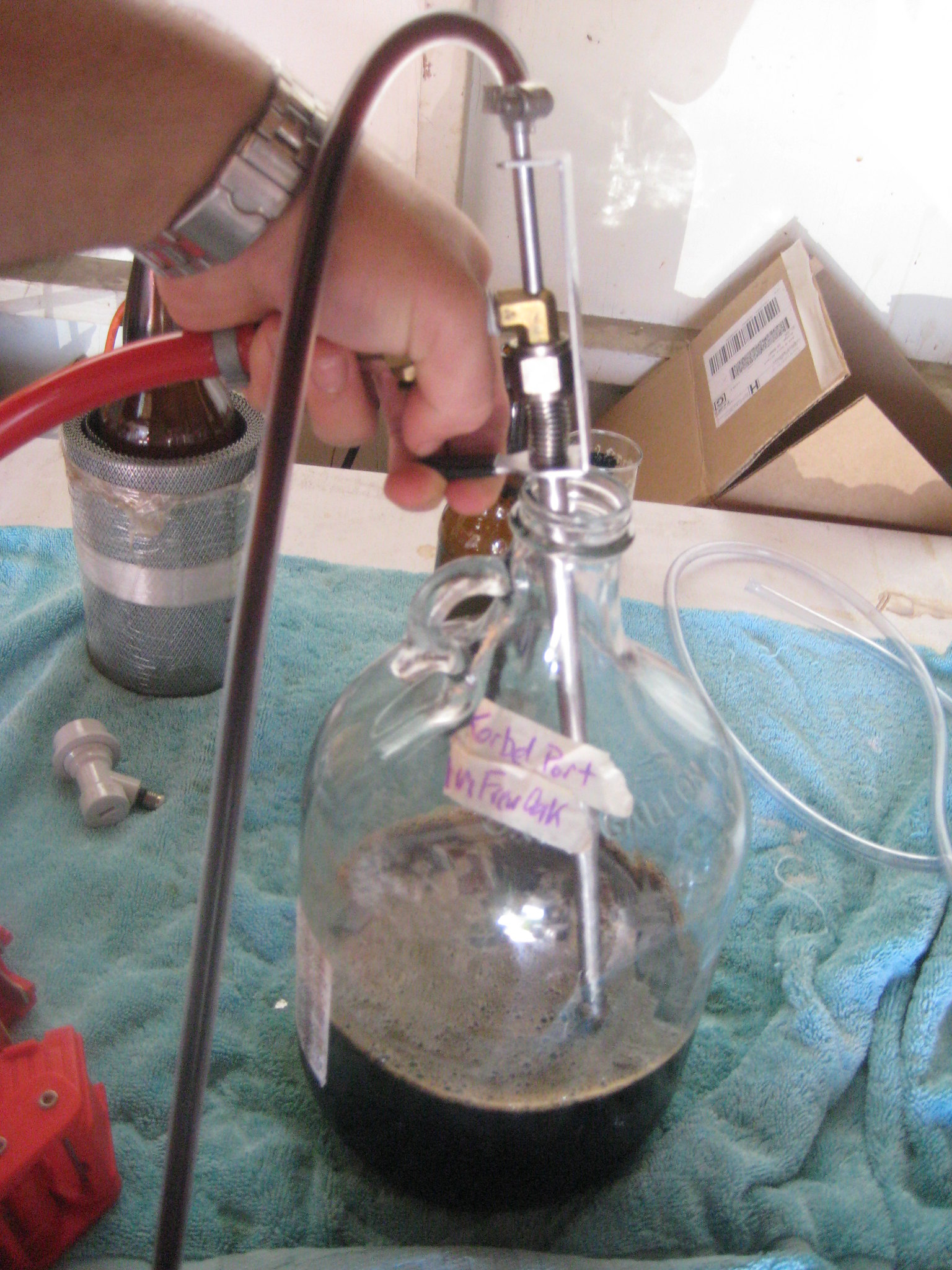 |
| Filling the first "barrel" |
 |
"Barrel" 1
Korbel Port / American French Oak |
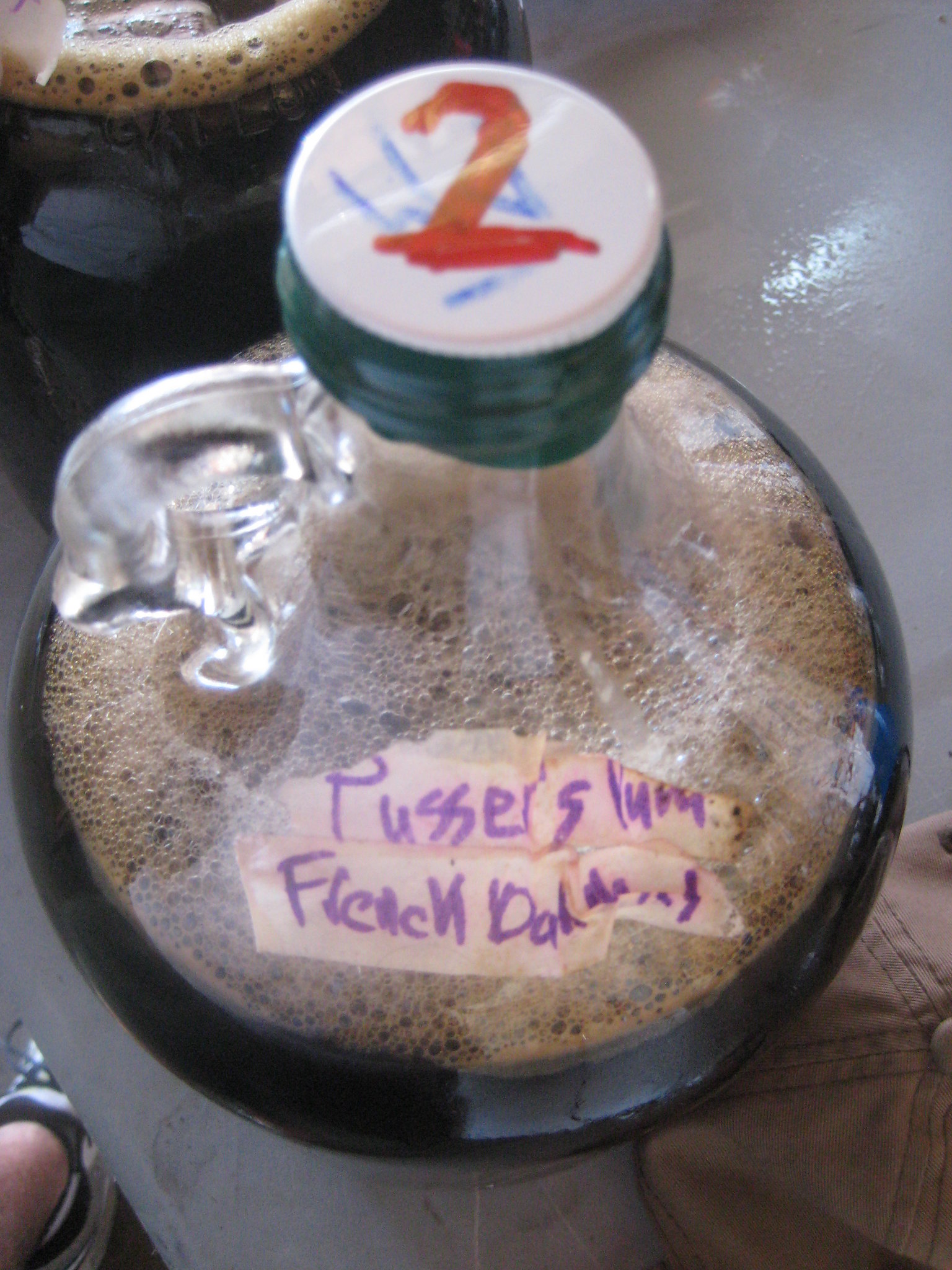 |
"Barrel" 2
Pusser's Rum / Medium French Oak |
 |
"Barrel" 3
Hecker Pass Ruby Port / Medium Oak Cubes |
 |
"Barrel" 4
Maker's Mark Bourbon / Oak Chips |
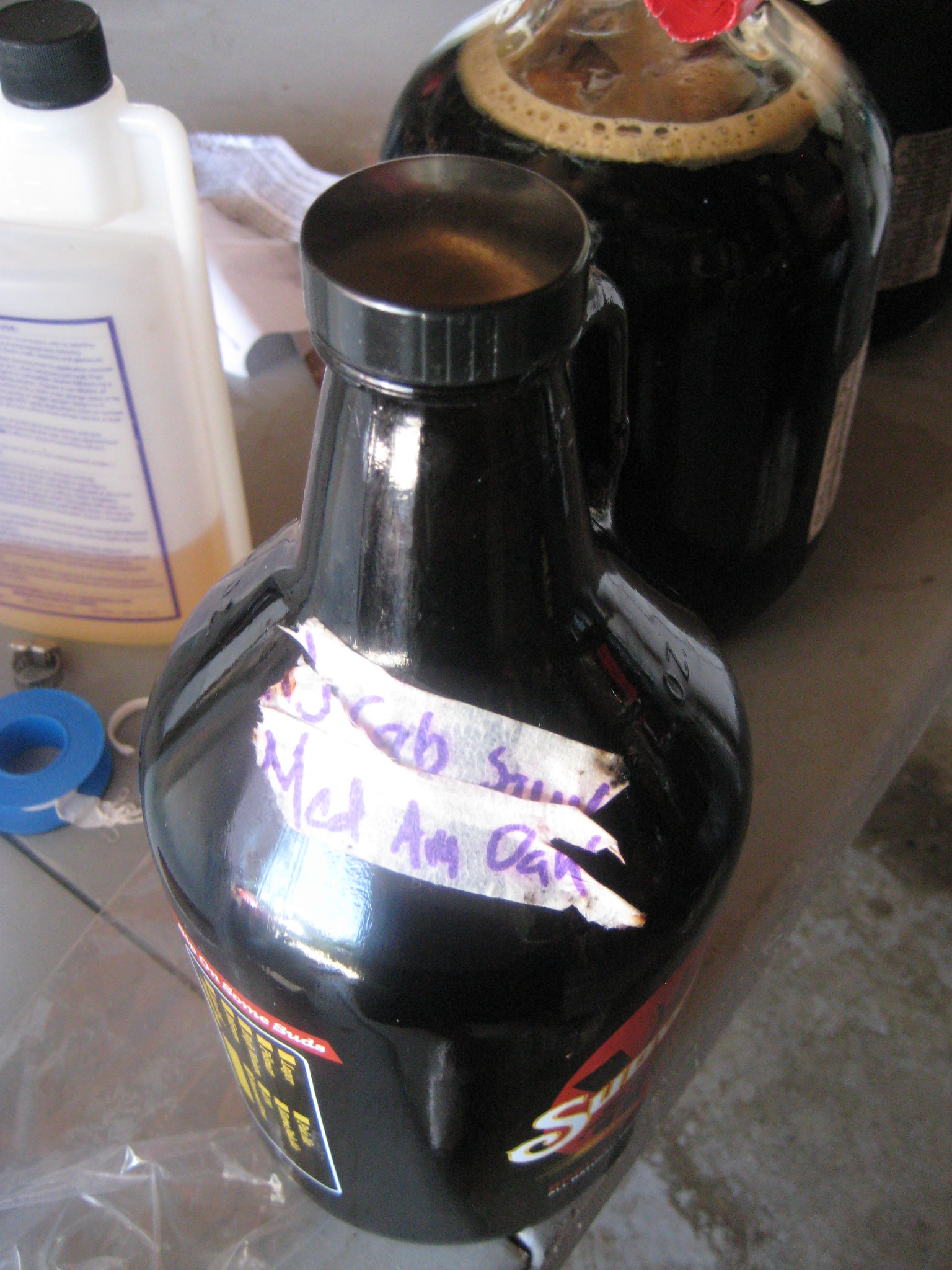 |
"Barrel" 5
Korbel Cabernet Sauvignon / Medium American Oak |
 |
| Two months later |
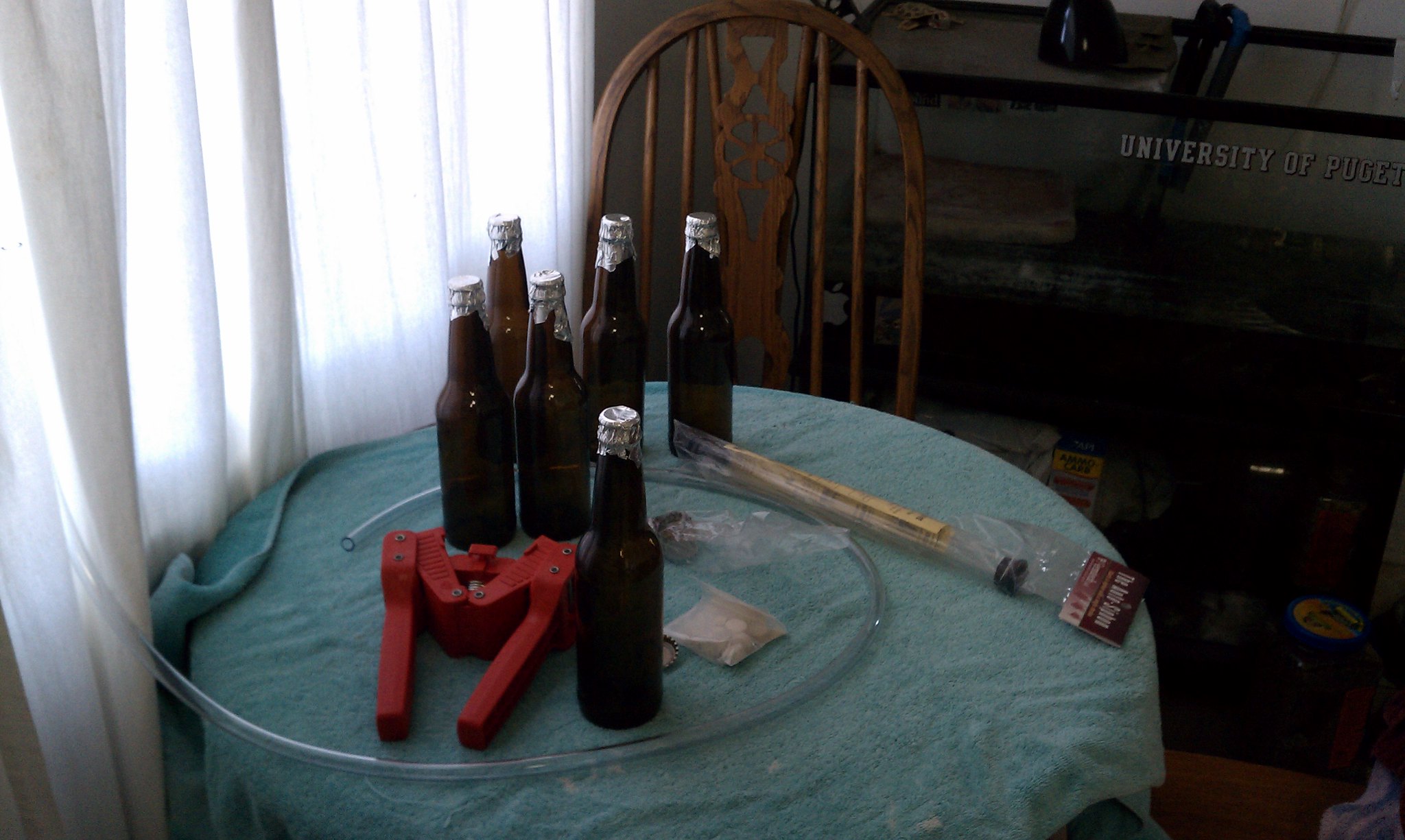 |
| Prepping to fill |
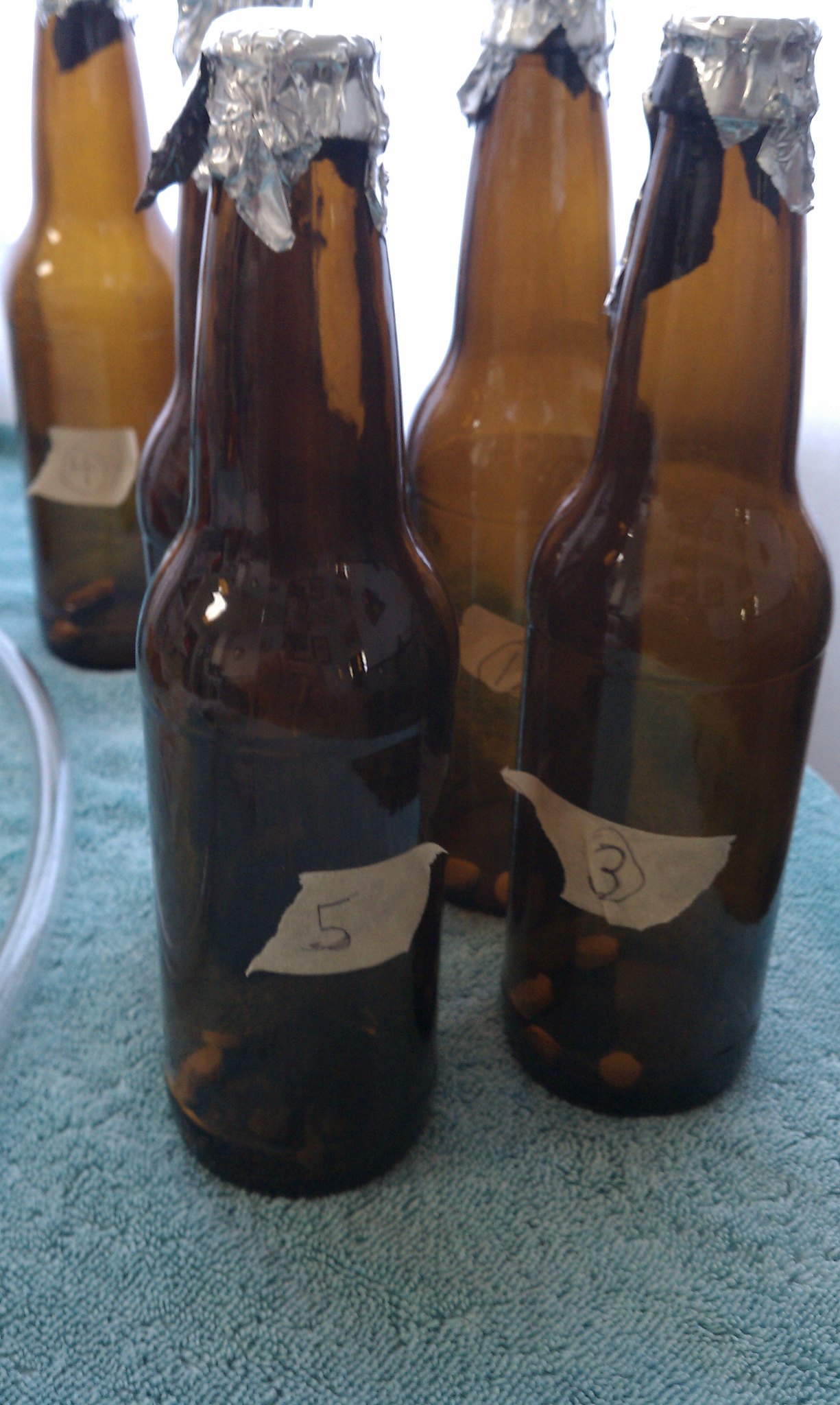 |
| Single bottles tabbed up |
 |
| Yeast slurry |
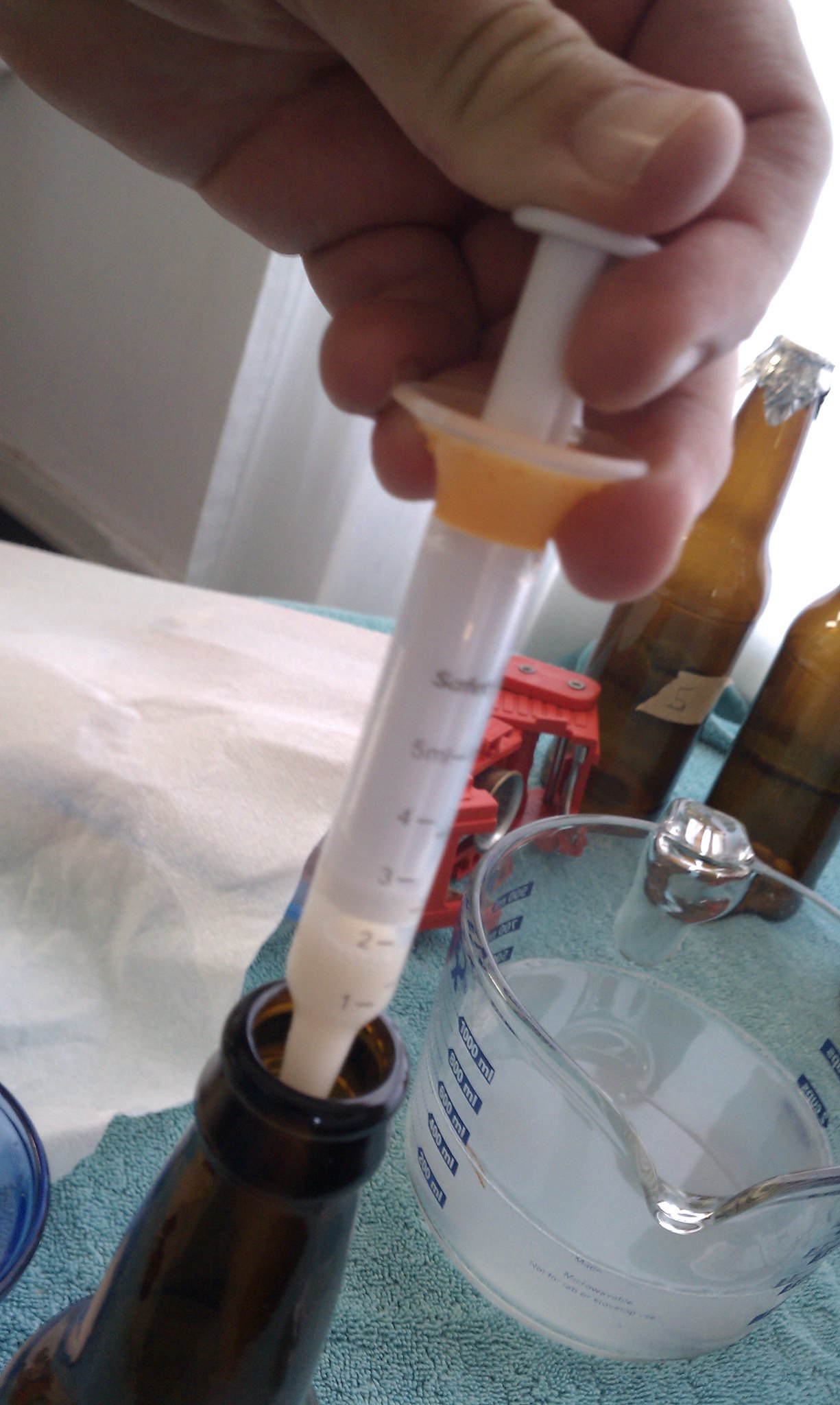 |
| Yeasting the bottles |
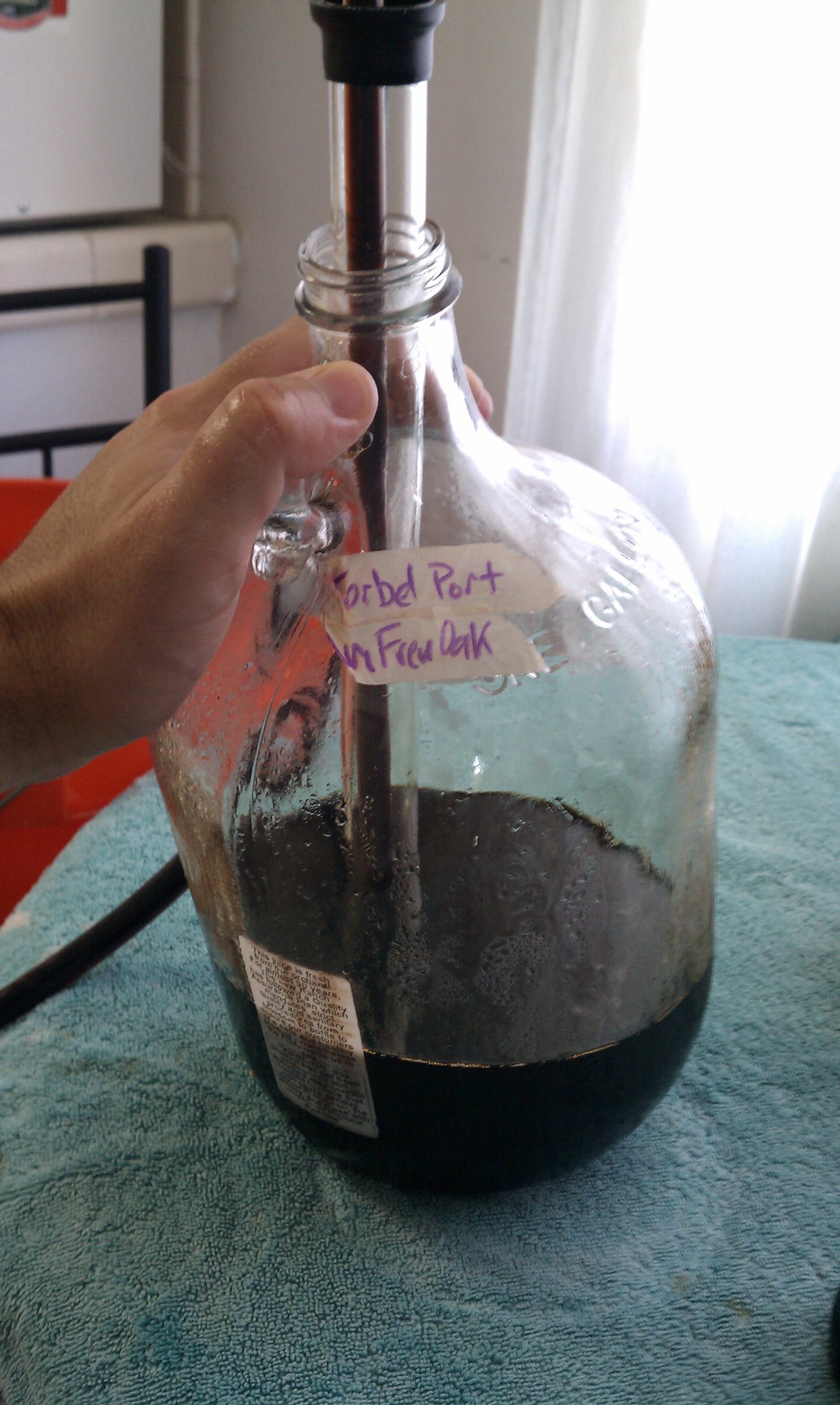 |
| Siphoning the "barrels" |
 |
| The single "barrel" bottles and 521 Blend |
 |
| Done |
 |
Separating the wood from the
left over beer I couldn't siphon |
 |
I saved the wood, no idea
what to do with it... yet |
 |
| Enjoying the leftover blend |
























Great stuff.
ReplyDeleteI have been doing these kind of experiments recently and really enjoying them. I've completed 2 so far:
Honeycomb Wood Types - http://jeffreycrane.blogspot.com/2012/04/great-wood-aging-experiment-7-varieties.html
Saison Yeasts- http://jeffreycrane.blogspot.com/2012/06/great-saison-experiment-8-strains-part.html
I'm curious how much oak you used in each gallon And would you add more next time? Or add straight liquor to taste at bottling?
I probably added about 2oz of spirit soaked oak to each jug. I didn't add any of the liquid as I was concerned that given the length of time it would be too tannin-y. For next time I think I'm going to do less time in secondary and more time in the "barrels"
DeleteWow. 2 oz in each gallon seems like a ton of oak. Maybe a lot of the oak flavor was left in the spirits. I find even a .25 oz of oak in a gallon to be a lot of oak for most styles.
DeleteI'm curious how the flavor would change if you just added oak to the beer and blended in your spirits at bottling Vs. your spirit soaked oak cubes.
Something to try next round
Delete